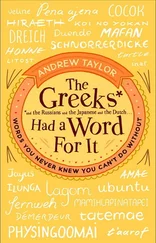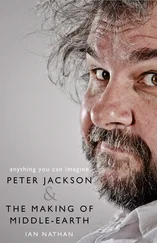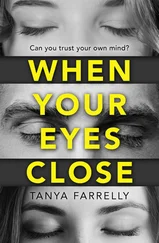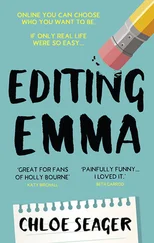However, if not won over, he had begun to be persuaded that these filmmakers were at least responsive to the needs of the book. In the box of notes sent to the author’s house in the Oxford suburb of Headington, the trio outlined an ambitious mix of live action and animation running to three hours, including two intermissions, with the aim of shooting among the untamed expanses of the American landscape. Tolkien had been especially impressed at the quality of the concept art. How unlike Walt Disney it was, he noted appreciatively.
A few weeks later, as he had begun to read the story treatment, his heart had sunk. He simply couldn’t detect ‘any appreciation for what it was about’. Gandalf does not ‘splutter’, he contended, the Balrog does not speak and Lothlórien does not have shiny minarets. All moral import had been lost. The entire tone was childish, more of a fairy tale. And his book was most certainly not a fairy tale. The treatment did, incidentally, include Tom Bombadil.
His response goes on for several pages. Each documenting a significant narrative failing in the laissez-faire approach Zimmerman, the nominal screenwriter, had taken with the original text.
Wizards can be quick to anger.
Such a maladroit effort, if not rank trivialisation of Tolkien’s great adventure, is disappointing for fans of the genre. Not that the book wouldn’t suffer an arduous journey through a litany of scrambled attempts before it would be done justice. It was more that one of the prospective producers was meant to have had a keen respect for fantasy fiction.
Ackerman is known as the godfather of geek. He had helped fashion the concept of the fan convention; arriving at the First World Science Fiction Convention in New York in 1939 clad in a ‘futuristicostume’, he effectively invented cosplay to boot. On a business footing, he served as agent for many of the great Fifties horror and science fiction writers whose imaginations were running rife beneath the shadow of the nuclear age (and the influence of Tolkien). Writers like Ray Bradbury, Marion Zimmer Bradley and Isaac Asimov, the latter of who would create the star-spanning Foundation trilogy.
In 1958, Ackerman began his lifelong tenure as editor of Famous Monsters of Filmland , a lavish, bustling monthly devoted to genre movies. Within its awe-struck pages were features celebrating King Kong , the 1933 classic, including the discovery of a fabled shot of a spider lurking on the cavern roof that fans had thought to be the stuff of myth. It also curated the kind of pun-heavy vernacular that saw the letters page christened ‘Fang Mail’.
For Tolkien, used to the unhurried discussion of philological esoterica among collegiate friends and the woody scent of pipe smoke at The Eagle and Child , he may as well have been from Mars.
For Peter Jackson and those filmmaking peers who shared a taste for the fantastic and the macabre, kindred visionaries like Guillermo del Toro, Fantastic Monsters of Filmland would become a friend in the dark. Here was proof that there were likeminded, monster-mad souls everywhere. Without it they may never have discovered their calling. In his old office, the secret one behind the bookcase that contained his most prized memorabilia, Jackson had his collection of back issues proudly on display.
With a rakish, pencil-thin moustache, high forehead and large horn-rimmed glasses, Ackerman suggested Vincent Price playing an insurance salesman, and he would appear in many of his beloved B-movies. He also dabbled a little in film production. And, together with his partners, was the first recorded prospector to engage with Tolkien about a film version of his great work.
We should respect the fact that Ackerman was ahead of the curve. In 1958, The Lord of the Rings was only four years old. While selling respectably, it was a long way from the cult prominence that made it a fixture of late-1960s campuses across America. An unauthorised ACE paperback edition had wriggled through America’s insubstantial copyright rules in 1965 and sold in phenomenal quantities. Indeed, by 1966 it was out-selling The Catcher in the Rye at Harvard. Students formed Tolkien societies, dressing up as their favourite characters and feasting on mushrooms. A scholarly lapel was naked without badges exclaiming ‘Frodo Lives’ or ‘Gandalf for President’.
Once official editions were issued (through the paperback imprint Ballantine Books) Tolkien would taste remarkable success. This in turn led to conspicuous quarters of the literary establishment scoffing at something they saw as childish. Among academics, to express affection for Tolkien was deemed as ‘professional suicide’.
In 1956, in his sarcastic essay, ‘ Oo, Those Awful Orcs! ’ Marxist critic Edmund Wilson called it ‘balderdash’.
Decades on, Germaine Greer claimed that the book’s popularity was like a ‘bad dream’.
Tolkien had never expected to start, as he put it, a ‘tide’. He only wrote the book for those who might like it.
Nevertheless, Frodo’s quest to rid the world of a magical ring by tossing it back into the volcanic fires from which it was forged had touched readers around the world. By 1968, three million copies of The Lord of the Rings had been sold worldwide. A 1999 poll conducted by Amazon judged it to be the Book of the Millennium. By 2003, once again much to the chagrin of the literary establishment, and perhaps catching a tailwind from Jackson’s films, a poll on behalf of the BBC’s Big Read named it Britain’s Favourite Read. According to recent calculations the book has sold upwards of 100 million copies.
Let us not tarry too long on the history of Tolkien and his literary genius. Reams have been written on the provenance of hobbits and the entirety of Middle-earth. Reams more will come. Born in Bloemfontein, South Africa in 1892, where his father died when he was three, he was raised by his mother in the bucolic Worcestershire village of Sarehole (since consumed by greater Birmingham). She would die when he was only twelve, leaving him and his brother, Hilary, orphans. An early fascination with ancient languages and their mythological roots would lead to his creating his own, and eventually to an Oxford professorship in English Language and Literature, a journey interrupted by enlistment and the First World War.
In the dreadful lulls between fighting on the Somme (where Jackson’s grandfather also fought), and while recuperating from trench fever in Staffordshire, Tolkien began to conceive of the vastness of his fictional world, a world that would have its origins in the languages he had devised. He never felt he was writing fantasy but a form of history, a record that would reveal who might have spoken such words and where they might have lived. He saw his book as an attempt to recover a mythology for Britain, which lacked the equivalent lore to that of the Germanic, Nordic and Icelandic sagas he loved. Through a process he called ‘sub-creation’ grew a backdrop for his later books, a world of intricate construction: races, languages, myriad tales of wars and upheaval and a vast, vital geography against which it all played out.
‘I always had the sense of recording what was already “there”, somewhere, not of “inventing”,’ recalled Tolkien.
Philippa Boyens, who would work so closely with Jackson and Fran Walsh on the writing of the adaptation to come, always valued the ‘wholeness’ of Middle-earth. ‘That you can escape into something that feels utterly real,’ she says. ‘I like that obsession. I like all the detail.’
Laughing, she recalls that whenever any questions from the cast or crew became too entangled in the brambles of Tolkien’s mythos they were always fielded to Boyens as the trio’s Tolkien nerd. She always impressed upon her fellow filmmakers how much underpinned the books.
Читать дальше












